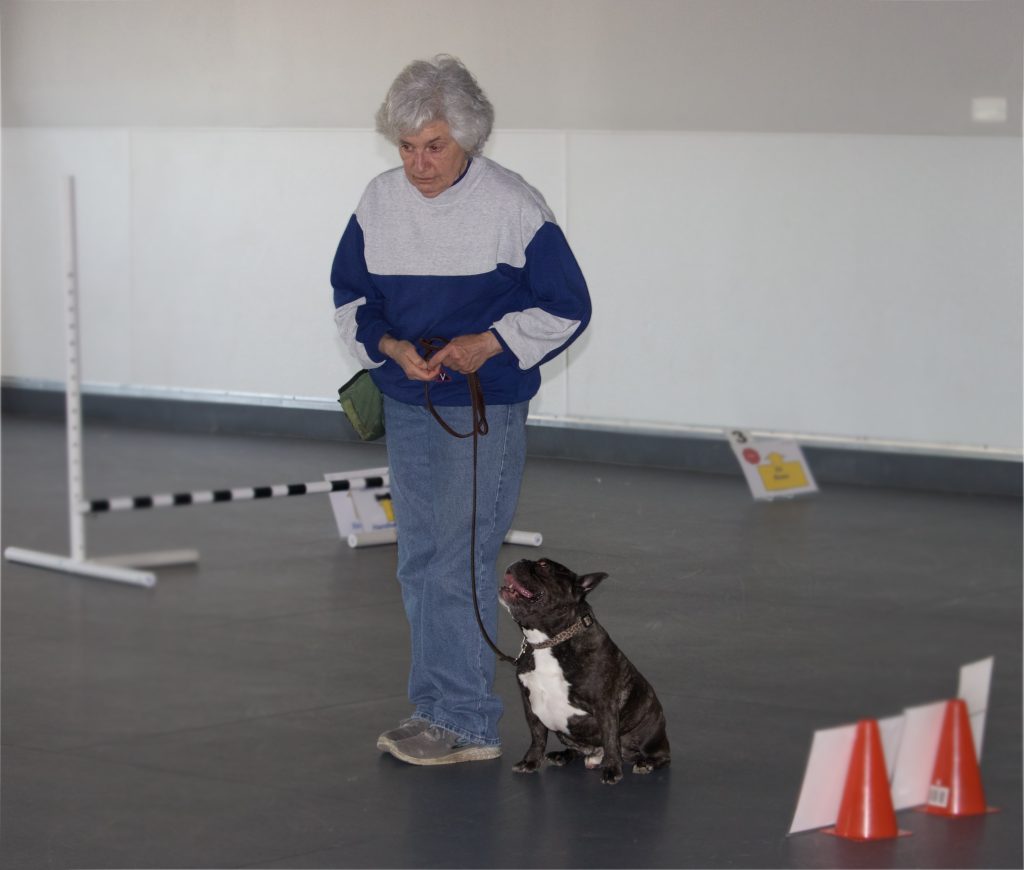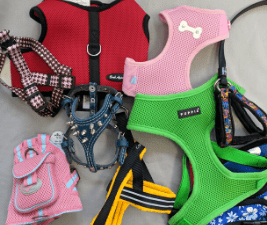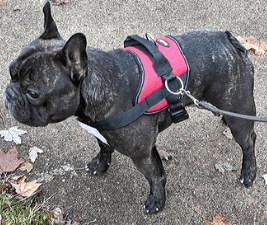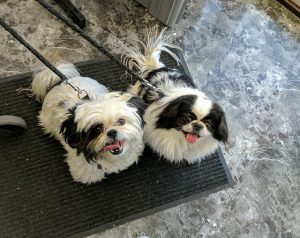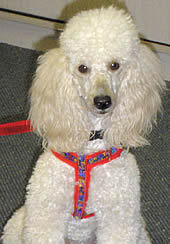Does it matter how dogs dress? The other day at Rally class somebody asked Hope why her dog Torque was wearing a collar instead of a harness. We’re not sure she even knows that we own a shop specializing in harnesses, but it does seem pretty funny, considering what we do for a living.
The simple answer is that our dogs dress for the occasion. Torque wears one of his harnesses when they go for a sniffy walk, or even a “let’s pretend we exercise” walk. He has a different harness for walking on the treadmill, and a fancier one when he’s visiting his doctor. But for Rally class, he wears one of his collars. Because dogs aren’t allowed to wear harnesses for any of the dog sports. Since that’s the case, we practice as if we’re preparing for competition, because we are.
Wardrobe necessities
But the question got us to thinking about all the different collars, harnesses, and leashes that we use for our dogs. It’s a pretty vast array, considering that we’re advocates of “naked in the house” for our dogs. There’s just too many things that a collar could get caught on. The most dangerous, for everybody, would be another dog’s jaw, considering the hooliganizing that goes on around here. We’re pretty sure that the skin-tight wrestling costumes professionals wear is for the same reason. Nothing to grab hold of, so nothing to cause damage.
But all of our dogs have a variety of harnesses and collars. What they wear depends on the season – we size up their fall/spring harnesses to fit over sweaters. It’s not necessary for winter, since their coats have access on the back for harnesses. For summer, we use a light weight harness, we like the EZ Wrap in the Net fabric for comfort and breathability.
Because we have multiple dogs, and have for many years, we’ve found the easiest way to remember which collars / harnesses / leashes belong to which dog is to color-code them. Every dog has his own color, and we try to stick to it whenever possible.
Our current line-up, in age order:
Tango, (Brussels Griffon who turns 14 years old this week!) wears Red, usually with touches of Black and White. We always like red on a solid black dog, which Tango used to be. Now that he’s got quite a bit of white fur, it still looks good on him.
Booker (Boston Terrier, 10) usually wears teal, or turquoise. He actually has a bit of brindle in his coat, which gives it a reddish tint in sunlight.
Torque (French Bulldog, 8) actually has a couple of colors. We really like the way his brindle stripes look when he wears yellow, but it’s really hard to find. So some of his harnesses and collars are patterns, either green camouflage or gold-tone animal prints.
Simon (Boston Terrier, 4) wears blue. Just about any shade of blue. It all looks good on his black and white tuxedo coloring.
Long answer
And that’s the very long answer to the question. Torque wears a collar for Rally class because that’s suitable for the occasion. And our dogs dress for success.
Enjoyed this post? Click here to sign up for the weekly newsletter and never miss another!









